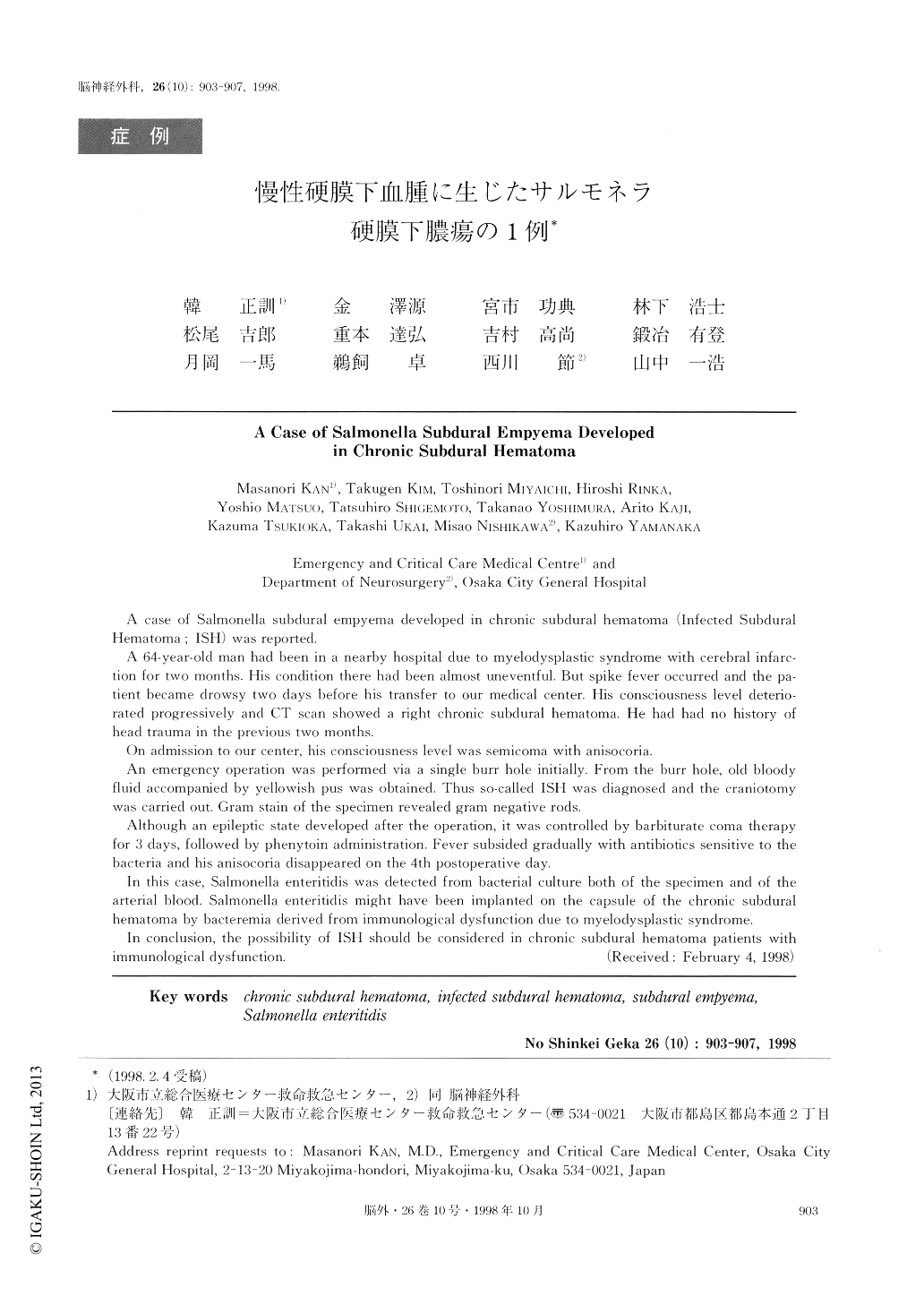Japanese
English
- 有料閲覧
- Abstract 文献概要
- 1ページ目 Look Inside
I.はじめに
硬膜下膿瘍は,全頭蓋内感染症の10-20%,あるいは脳膿瘍の1/4-1/5の頻度でみられ,近年その予後は頭部CTやMRI等による早期診断と抗生物質の発達により改善してきている.
一方,慢性硬膜下血腫に転移性に感染が波及して生じたいわゆる“infected subdural hematoma(ISH)”は極めて稀である3,4,10,11,15,17,19).
今回,われわれは骨髄異形成症候群の治療中に起こった慢性硬膜下血腫にSalmonella enteritidisが血行性感染したと考えられた症例を経験したので若干の文献的考察を加えて報告する.
A case of Salmonella subdural empyema developed in chronic subdural hematoma (Infected SubduralHematoma ; ISH) was reported.
A 64-year-old man had been in a nearby hospital due to myelodysplastic syndrome with cerebral infarc-tion for two months. His condition there had been almost uneventful. But spike fever occurred and the pa-tient became drowsy two clays before his transfer to our medical center. His consciousness level deterio-rated progressively and CT scan showed a right chronic subdural hematoma. He had had no history ofhead trauma in the previous two months.
On admission to our center, his consciousness level was semicoma with anisocoria.
An emergency operation was performed via a single burr hole initially. From the burr hole, old bloodyfluid accompanied by yellowish pus was obtained.Thus so-called ISH was diagnosed and the craniotomy was carried out. Gram stain of the specimen revealedgram negative rods.
Although an epileptic state developed after the operation, it was controlled by barbiturate comatherapyfor 3 days, followed by phenytoin administration. Fever subsided gradually with antibiotics sensitiveto thebacteria and his anisocoria disappeared on the 4th postoperative day.
In this case, Salmonella enteritidis was detected from bacterial culture both of the specimen and ofthearterial blood. Salmonella enteritidis might have been implanted on the capsule of the chronicsubduralhematoma by bacteremia derived from immunological dysfunction due to myelodysplastic syndrome.
In conclusion, the possibility of ISH should be considered in chronic subdural hematoma patientswithimmunological dysfunction.

Copyright © 1998, Igaku-Shoin Ltd. All rights reserved.


